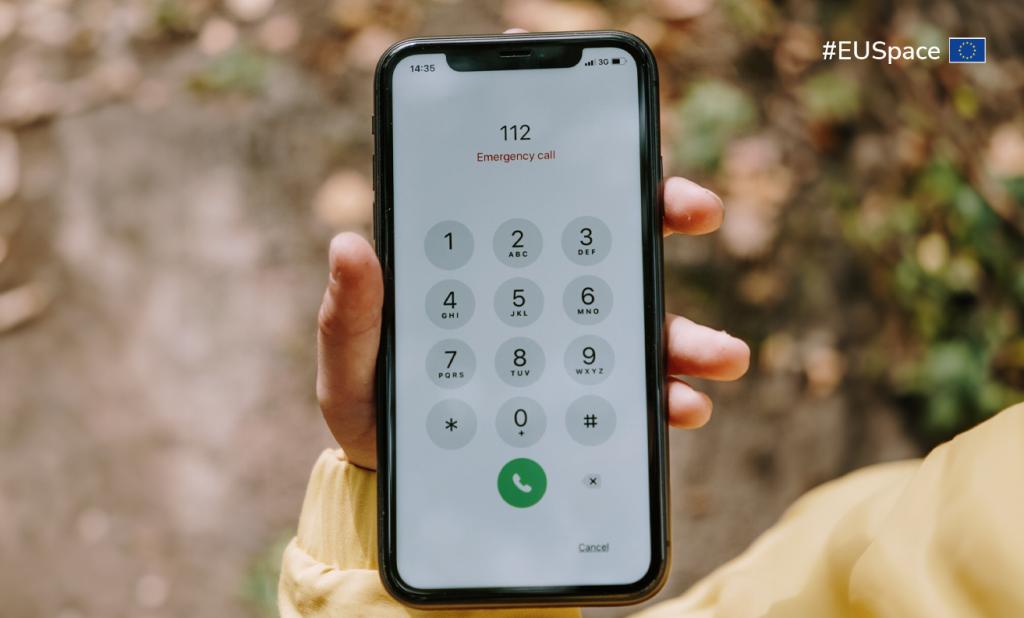112 and Galileo: Answering the call and saving lives

With the European 112-emergency number, help is never more than a phone call away. The service, which is available free of charge from fixed and mobile phones everywhere in the EU, connects a caller to a Public Safety Answering Point (PSAP). A PSAP is a call centre where calls for first responders, including police, ambulance and fire brigade, are received and handled.
While 112 has been answering the call – and saving lives – for over 30 years, thanks in part to EU Space, it’s also continually evolving to offer even better services.
The EU Space Programme was conceived to benefit and protect EU citizens, and Galileo’s successful integration into the 112-emergency number does exactly that.
As Europe celebrates 112 Day, let’s look at how the EU Space Programme is helping to enhance these lifesaving digits.
Galileo signals for more accurate positioning
Before we started to use GNSS for locating callers making an emergency call from their smartphones, when an emergency call was placed via a mobile phone, the caller’s location was established based on the coverage area of a cellular network tower. Unfortunately, the accuracy of that location information could vary anywhere from two to 10 kilometres. That’s a pretty big gap in which an emergency responder would need to find you!
But today, GNSS, including Galileo, which helps fill this accuracy gap.
In fact, the EU now requires that all smartphones placed in the European single market be compatible and interoperable with at least Galileo. The result is E112, a location-enhanced version of the 112-emergency service.
When a mobile phone is GNSS-enabled, including Galileo one, it can provide location information with an accuracy of down to just a few metres. This level of accuracy can have a major impact in terms of response times – and in emergency situations, every second counts.
Advanced Mobile Location (AML) uses GNSS information from the caller’s smartphone to accurately locate them. When a caller dials 112 from their smartphone, AML uses the phone’s integrated functionalities, deriving data from Galileo (and Wi-Fi) to accurately pinpoint the caller’s location. This information is then transmitted to a dedicated endpoint, usually a PSAP, which makes the caller’s location available to emergency responders, ensuring that help gets to where it needs to be even faster.
Putting the power of Galileo into smartphones and emergency control rooms across Europe translates into even more lives being saved.
Currently, more than 3 billion Galileo-enabled smartphones are in use worldwide. You can see if yours is one of them by visiting www.useGalileo.eu.
eCall to the rescue
While 112 has proven to be a lifesaving service, it only works if you call it. However, in a motor vehicle accident, a victim might not be able to reach their mobile phone or be physically capable of calling 112.
In situations like these, there’s eCall.
The eCall service is automatically activated as soon as in-vehicle sensors detect a serious crash. Once activated, the system dials the 112-emergency number and establishes a telephone link to the appropriate emergency call centre.
Leveraging EGNSS (Galileo and EGNOS), the system sends the accurate position of the crashed vehicle and the direction of travel to the emergency services, enabling responders to get to the accident site faster.
An eCall can also be triggered manually by pushing a button in the car, for example by a witness to a serious accident.
According to the European Commission, in some cases eCall can cut emergency response times in half, reducing the number of fatalities by 4% and the number of severe injuries by 6 – 10%. More so, thanks to improved accident management, it has the potential to help reduce congestion costs caused by traffic accidents.
All new car models sold in the EU are required to come with the Galileo-enabled 112-based eCall system already installed.
“eCall is a true success story for Europe, one that leverages EU Space and specifically Galileo’s precise positioning to save lives – which is certainly something worth celebrating,” concludes da Costa.
Media note: This feature can be republished without charge provided the European Union Agency for the Space Programme (EUSPA) is acknowledged as the source at the top or the bottom of the story. You must request permission before you use any of the photographs on the site. If you republish, we would be grateful if you could link back to the EUSPA website (http://www.euspa.europa.eu).